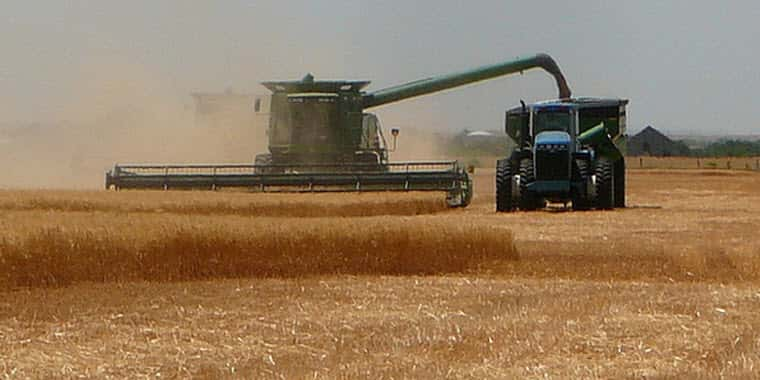While corn and soybeans generally steal the thunder of each USDA report, the July Production and World Agricultural Supply and Demand Estimate (WASDE) reports clearly shifted the trade focus to the wheat futures markets. While the corn and soy numbers were mostly neutral to a bit bearish, both U.S. and world wheat production and ending stocks proved to be more bullish for prices than was expected. The focus was clearly on the spring wheat crop that has been decimated by the ongoing drought.
As the Northern Plains, Northwest and Canadian Prairies see the hot and dry conditions continue, Monday’s report gave further support to wheat prices. All wheat production fell by a greater-than-expected 152 mb from June to 1.746 bb, with much of the credit given to other spring wheat and white wheat, both of which have baked under drought conditions.
Pre-report surveys had the average trade estimate at 1.835 bb. Hard red winter wheat rose to 805 mb from 771 mb in June; that figured about 13 mb higher than the trade had guessed. Soft red winter wheat also jumped to 362 mb — a 27 mb gain from June. White wheat fell from 202 mb to 198 mb, down 48 mb from a year ago. The real surprise was other spring wheat, which fell to 345 mb — a full 99 mb below the average trade estimate and 241 mb below last year. Hard red spring wheat production, at a paltry 305 mb, figures 42% below last year — reported to be the lowest since 1987-88.
In Montana, where winter wheat harvest has started, winter wheat production is forecast 6% lower, even though harvest acres are estimated to be up 14%. The Ag Department says Spring wheat production in Montana will be 49% smaller this year and down 41% in North Dakota. Similar story for barley, last year Both North Dakota and Montana averaged 63 bushels per acre, this year estimated at 39 bushels.
USDA also lowered feed and residual use by 10 mb to 170 mb and slashed exports by 25 mb to 875 mb. Yield for wheat fell to 45.8 bpa from 50.7 bpa, with harvested acres declining by 700,000 acres to 37.4 ma. Ending stocks for 2021-22 fell to just 665 mb — the lowest carryout since 2013-14. Hard red winter wheat ending stocks fell to 369 mb from 426 mb, hard red spring wheat stocks fell by 116 mb to 119 mb and white wheat fell by 19 mb to 51 mb. Soft red wheat stocks rose 20 mb to 105 mb. Durum ending stocks fell to a meager 20 mb from 28 mb last year.
On a global basis, ending stocks plunged by a larger-than-expected 5.1 mmt to 291.7 mmt (10.7 bb) for 2021-22 — the average trade estimate was 295.8 mmt (10.87 bb), so the stocks figured 4 mmt below that. Some notable world wheat production changes: Russia fell by 1 mmt to 85 mmt, and Kazakhstan declined by 1 mmt to 13 mmt, and Canada fell by 500,000 mt to 31.5 mmt. Australian wheat production rose by 1.5 mmt to 28.5 mmt, while Ukraine rose by 500,000 mt, and both the EU and UK each rose by 700,000 mt.
Kansas City September was trading up 5 cents before the report, and finished 21 cents higher on Monday, while Minneapolis was up 15 cents and closed up 43 cents to a new closing high.
###
DTN/Northern Ag Network


